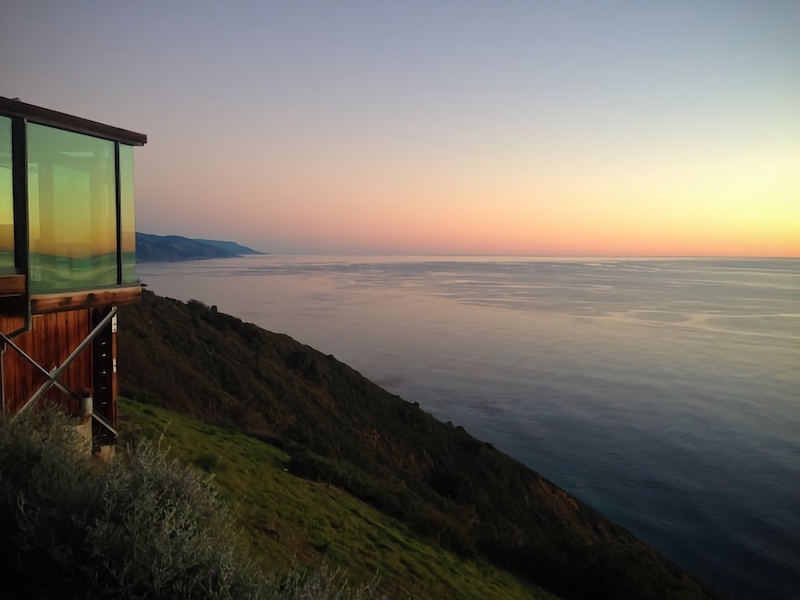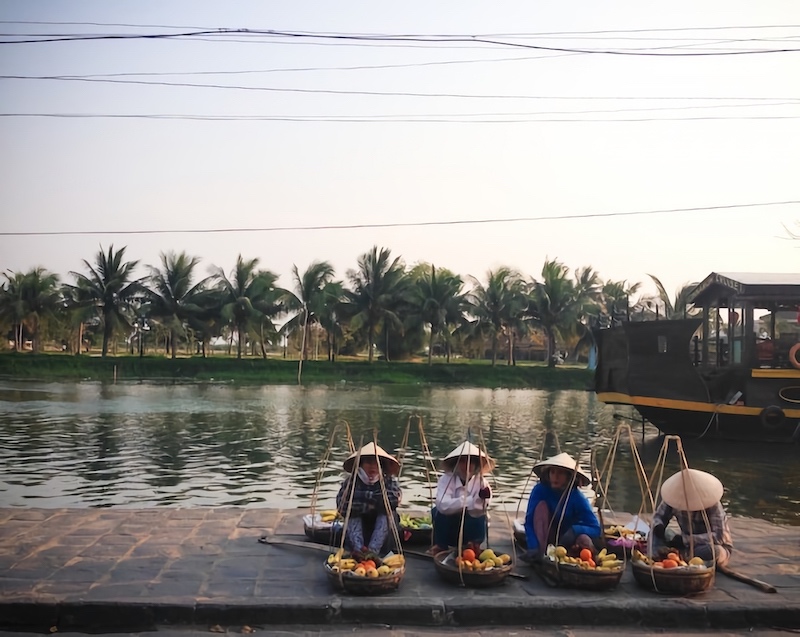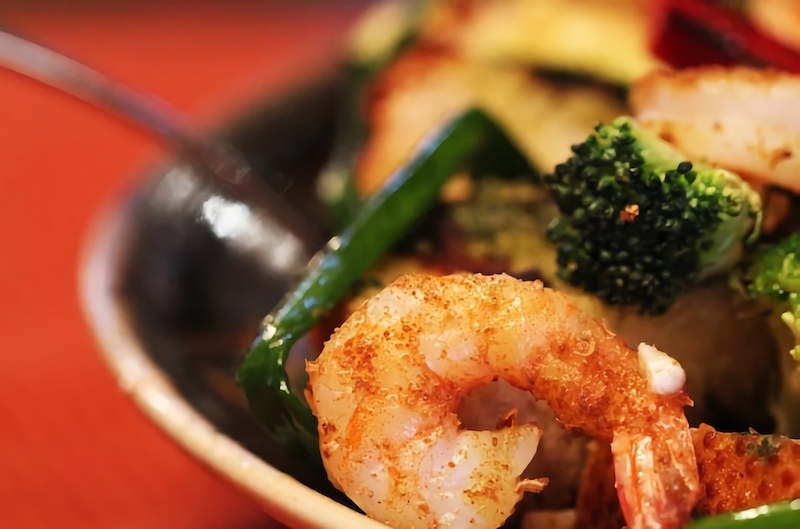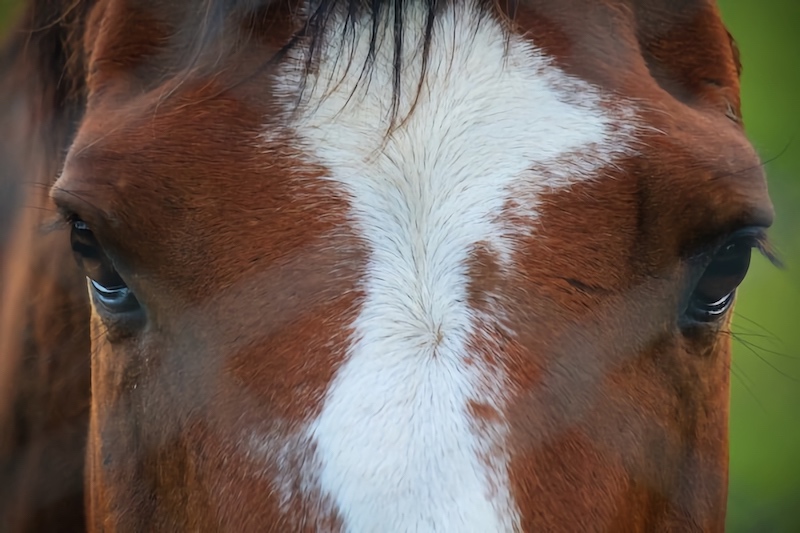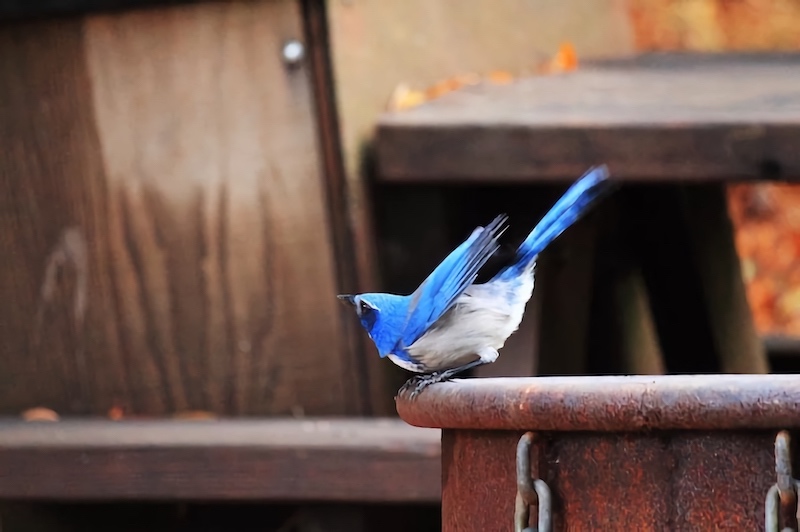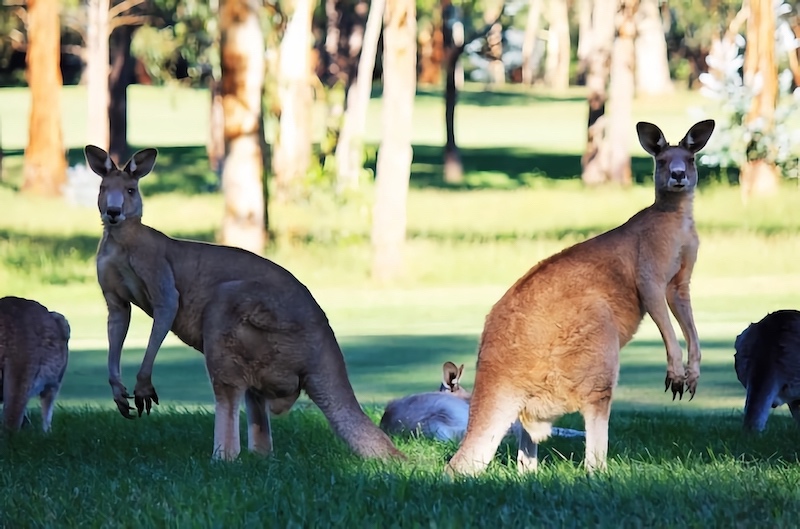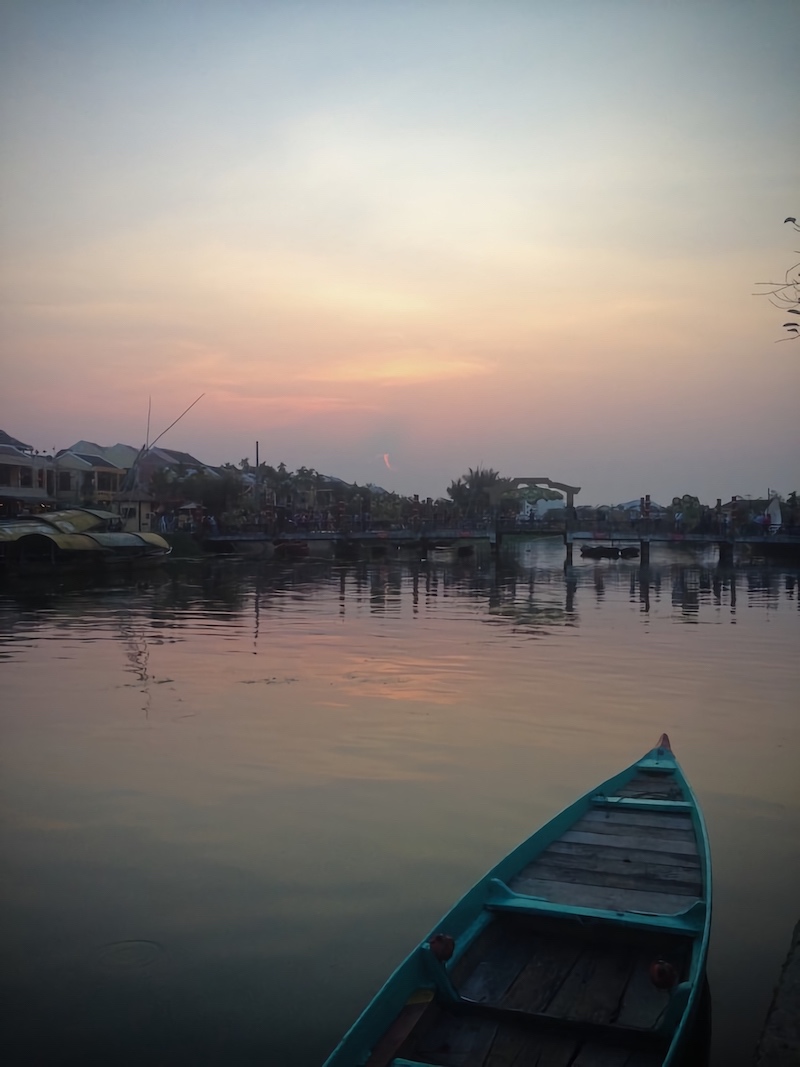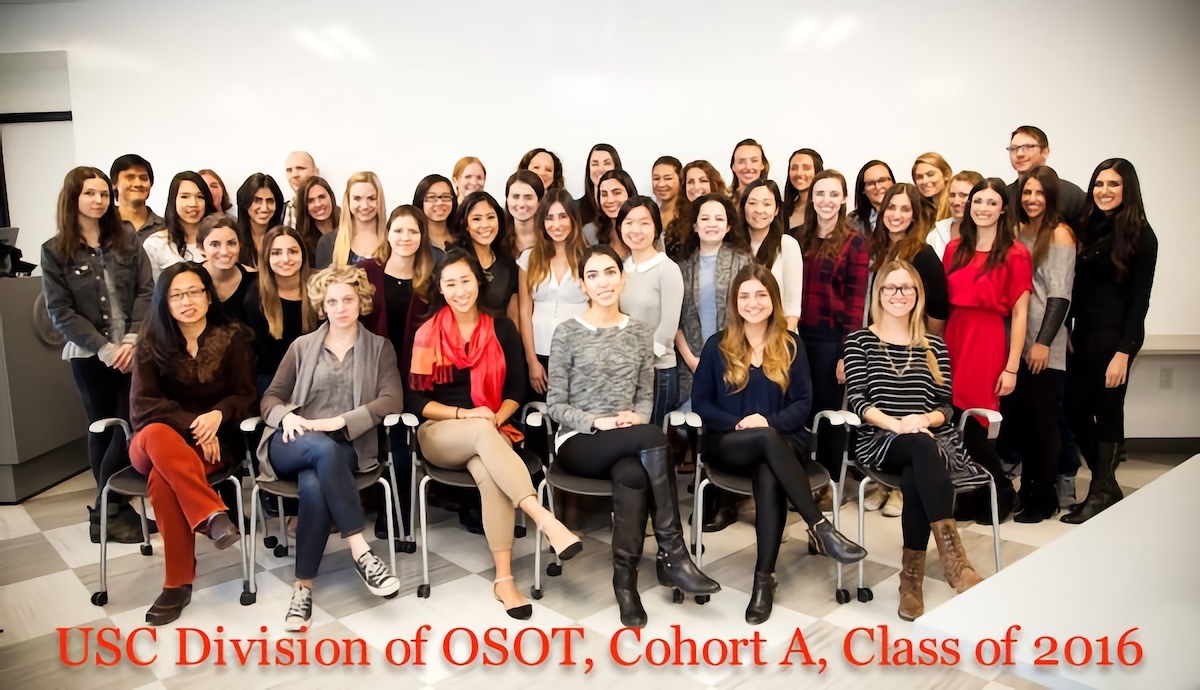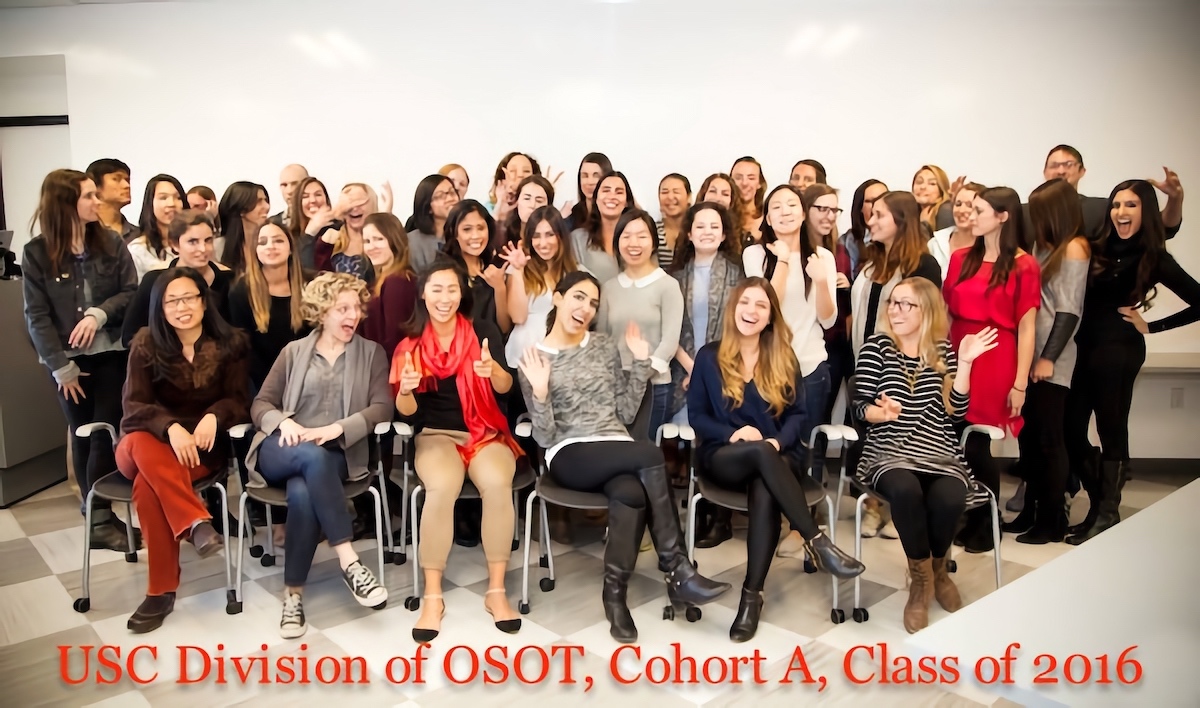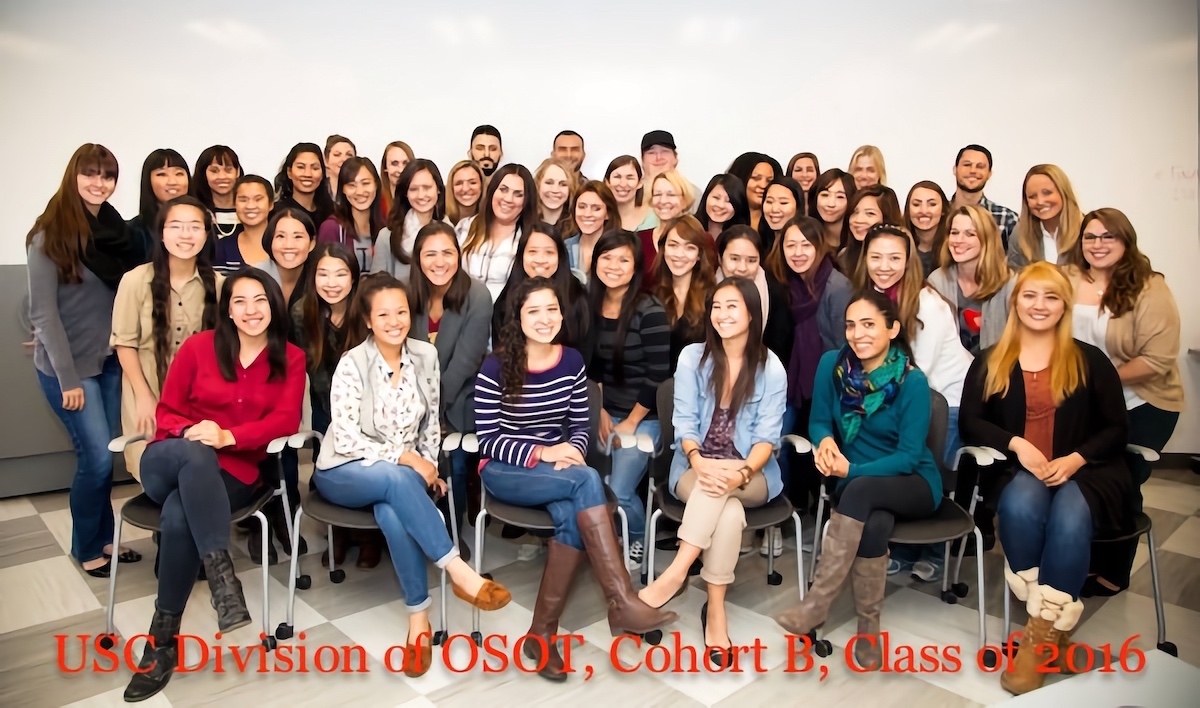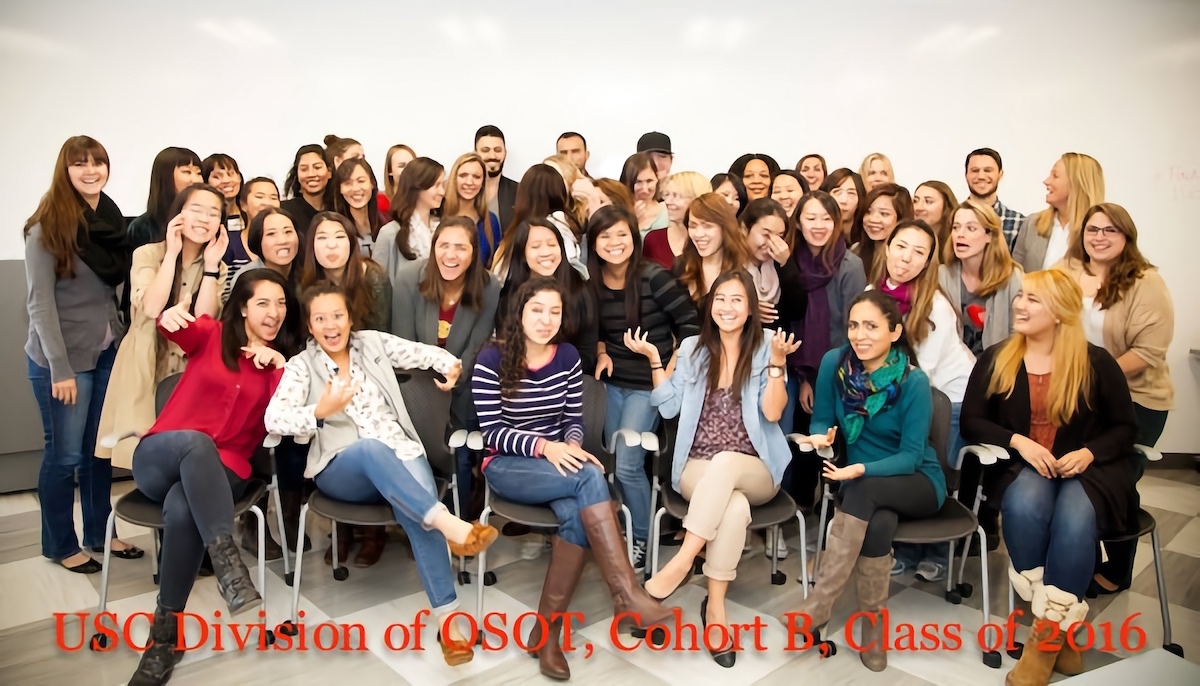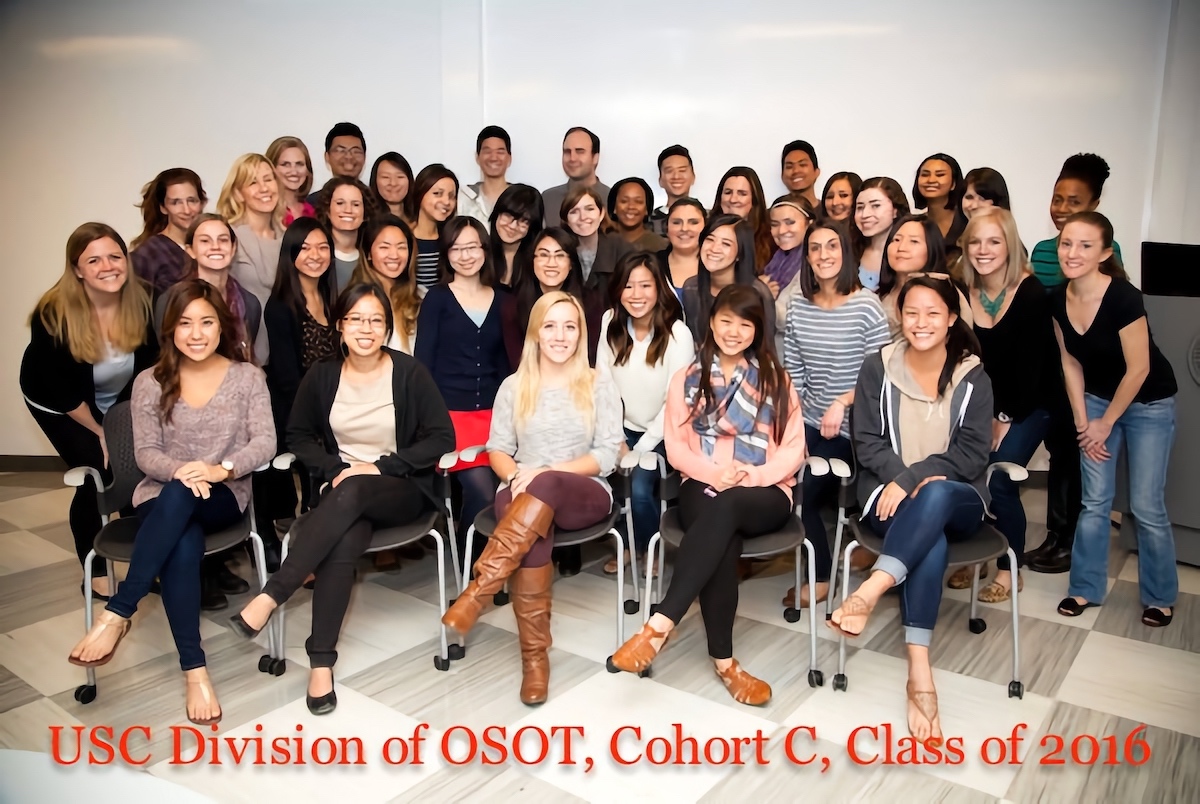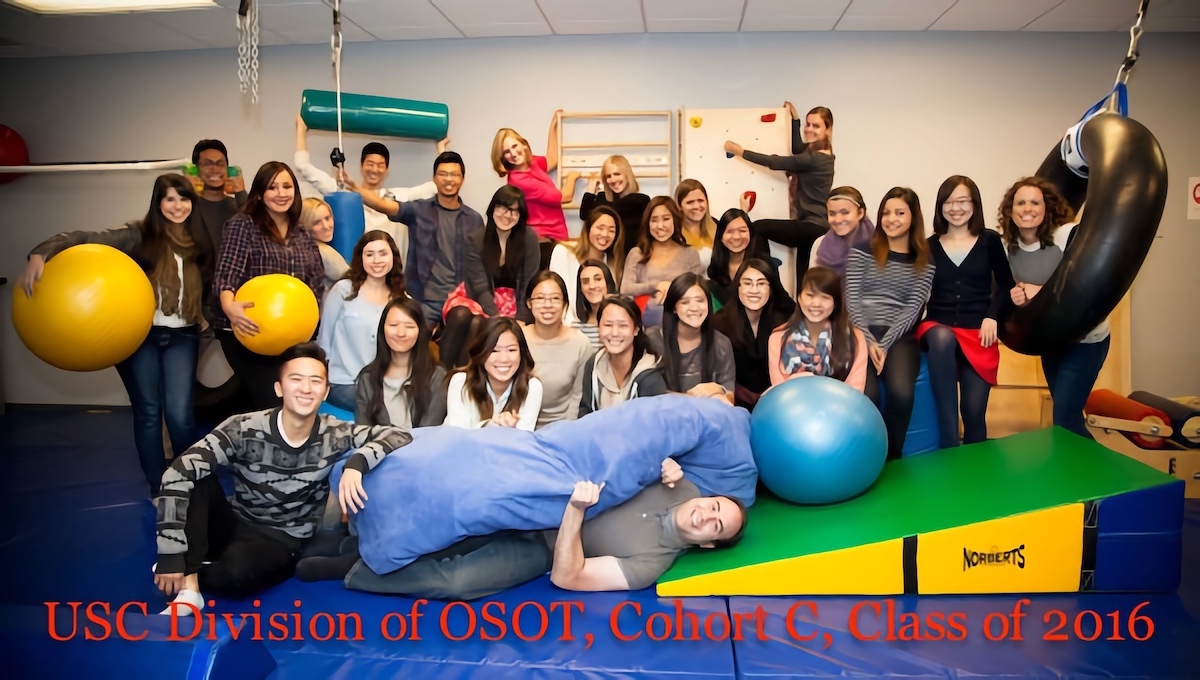Student Blog
Heather

One last occupation: photography ⟩
May 2, 2016, by Heather
Beginnings and Endings School/Life Balance
As a way to ring in the end of my graduate school experience, I wanted to talk a little bit about one of my favorite occupations: taking photos.
I found my passion for photography over twenty years ago, when my father gave me his old point-and-shoot camera. I initially discovered my love for taking photographs of flowers and different elements of our natural world. It was beautiful and seemed safe at the time.
When I was in high school, I joined the school newspaper as the staff photographer. This gave me an introduction into taking photographs of people. All different types of people.
When I moved on to bigger and better things in college, I decided to minor in photography. Our school had a well-renowned art department, so I thought it would be a good idea to make the most of the resources it had to offer. I recall the discomfort of my first photography class critique — we reviewed each other’s work and gave constructive criticism (out loud). It was extremely difficult. I learned eventually to not shy away from criticism, as I saw my craft improving with time and peer feedback.
After college, I moved to San Francisco and tried to start my own photography business. My passion had evolved from taking photographs of the natural world to taking photographs of food. Yep, food porn basically. I was offered opportunities to assist on bigger photo projects for brands showcasing ice creams, soups, yogurts, and for projects for Bon Appetit magazine. I was loving the challenges and the different types of art I was being exposed to.
To this day, I still love photography. I look forward to its next big challenge for me.
⋯

The next step . . . ⟩
April 14, 2016, by Heather
Happy OT Month!
As we are winding down the semester, these cohorts of students are getting ready to graduate in a little less than a month.
Cheers to walking across the stage on our way to the next journey!
⋯

Rehabilitation with Motor Control ⟩
February 19, 2016, by Heather
Hello Springtime!
Apologies for my blogging absence these past few weeks – I have been extremely immersed in my classes. I am absolutely thrilled about my course load this semester. I am taking two required courses, Advanced Seminar in Occupational Science and Leadership Capstone. The electives that I am taking are Motor Control, Physical Agent Modalities, Hand Rehabilitation, and an Independent Study in Human Anatomy. The classes overlap very well, and I find myself learning a great deal in the areas of practice that I am most passionate about.
The Motor Control course takes place at Rancho Los Amigos Hospital, or as we call it, “Rancho.” Rancho is well known for its rehabilitation program, especially its occupational therapy programs. Many of the case studies that we have learned about in class have come straight from patients at Rancho, or from our professor’s clinical experience working at Rancho. Many of USC’s OT doctorate candidates and doctors practice at Rancho, and are actively involved in the Motor Control class.
The Motor Control class is focused on stroke rehabilitation in Rancho’s inpatient unit. This is very meaningful for me because of my history of working with my grandma after she suffered from a stroke. My experience of working with her is what led me to occupational therapy in the first place. It made me realize that I liked being in the position of helping others as I witnessed her recovery. Sometimes it takes a crisis to realize what you are good at.
So far in Motor Control, I have drawn upon my knowledge of human anatomy, physiology, kinesiology, and body biomechanics. We are largely focused on getting certain muscle groups activated in our clients. (Side bar: we practice on each other for a few weeks before we are introduced to actual patients in the second half of the course). We are taught that before we can work on ADLs/IADLs with a patient, we need to ensure that they can move in certain ways for functional performance. We begin by facilitating movement at the pelvis, and then move on to the trunk and scapula. If we cannot facilitate movement easily, we mobilize these certain areas which requires a more hands-on approach. Additionally, we learn how to use orthotics and tools that have proven to be effective in stroke rehabilitation. With practice and clinical experience, we will begin to realize what treatment techniques will be most useful for our patients to regain function.
I have learned from Motor Control, and from my Grandma’s recovery, that the basic tenet of stroke rehabilitation stems from the idea that all activity should be purposeful in recovery. I look forward to working directly with the patients in the second half of the course.
This class has truly united my vocation with my avocation, and I am so thrilled to be even further along my road to becoming a licensed OT in just a few months!
⋯

Community Programming and Research ⟩
December 4, 2015, by Heather
On Thursday, the USC Chan Division held their annual poster presentation evening featuring the students’ community programming and research projects. Every student, either individually or in a group, presented their project to the students and faculty.
My group partner and I finished our project that focuses on upper extremity ergonomics and proper body mechanics as it relates to the musician. We created a program that explores the prevention of repetitive motion injuries in musicians, and further investigated psychosocial factors that contribute to the development or exacerbation of musculoskeletal disorders in the musician population. The program was developed into three tiers: pre-season, season, and post-season. We incorporated the expertise of certified hand therapists, and guest lecturers to focus on health, wellness, nutrition, and stress related to performance anxiety.
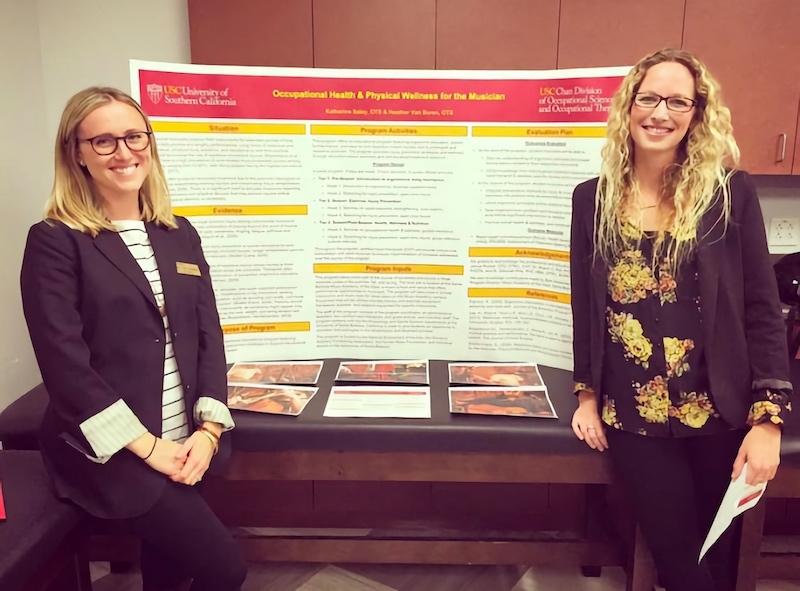
Here are some of the other poster projects from some of our fellow classmates.
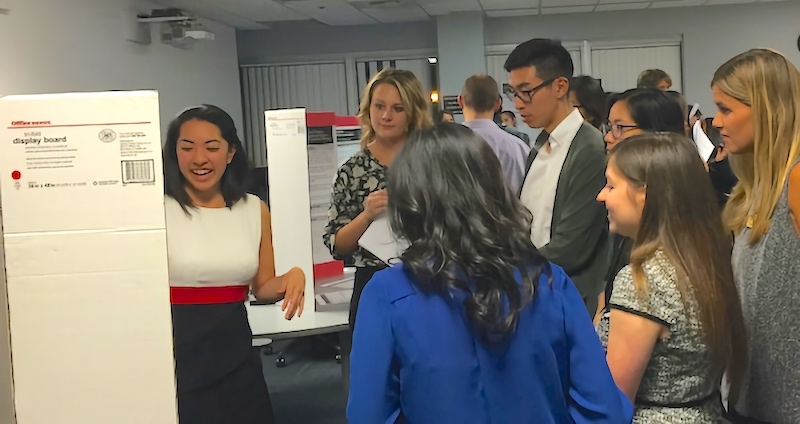
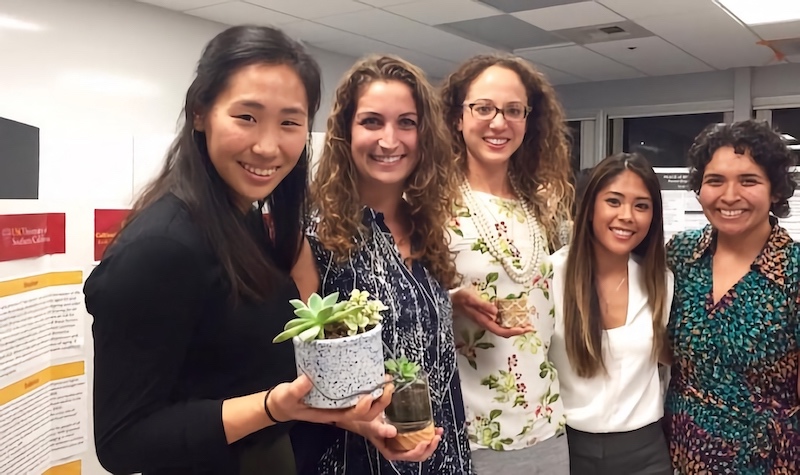
⋯

Just for Kids! ⟩
December 2, 2015, by Heather
This week we had the opportunity to learn more about pediatric splinting. Making a splint is a pretty cool, but making a splint for a kid is even cooler!
Some pediatric hand conditions that might require hand splints include congenital anomalies, neurological disorders, peripheral nerve injuries, and traumatic injuries. These splints may protect the kiddo’s joints, muscles, and tendons depending on their specific condition.
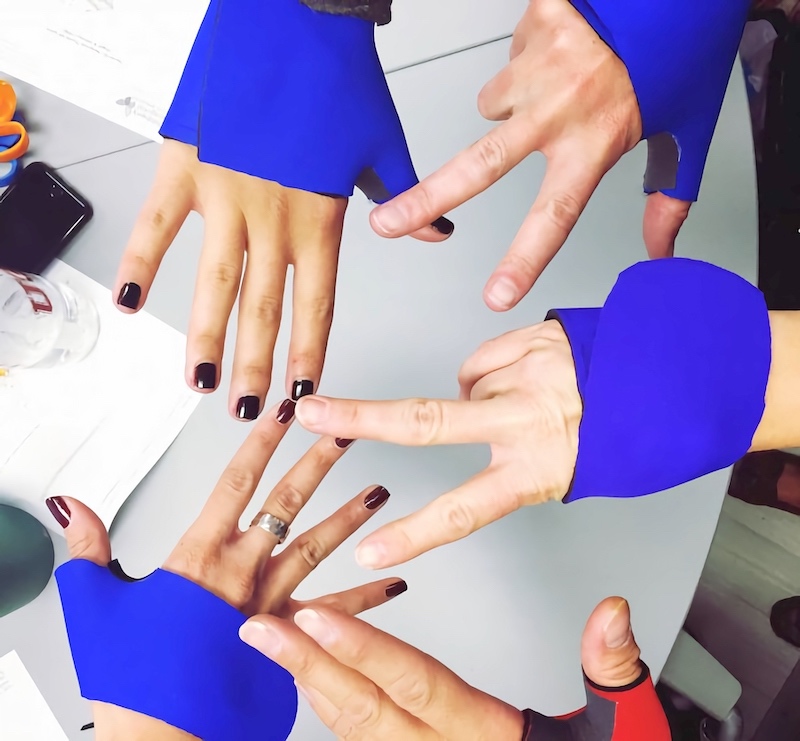
Pediatric splinting
I look forward to learning more about hand anatomy and function when I take the hands elective course next semester!
⋯






